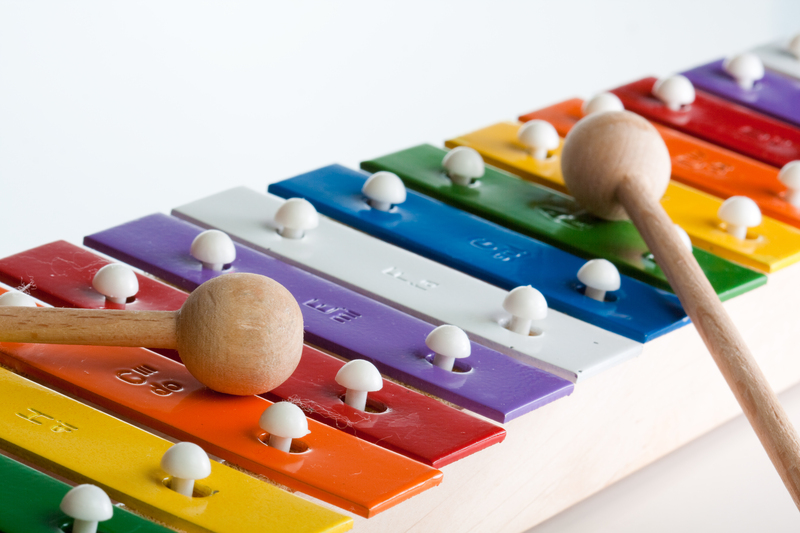Effortless Plant Pot Disposal Ideas: Sustainable Solutions for Every Gardener
If you're an avid gardener or have a few houseplants, it's likely you've accumulated a small collection of used plant pots over time. These containers--plastic, terracotta, ceramic, or biodegradable--can quickly take up precious space in your shed or garage. But how do you get rid of them responsibly? This comprehensive guide explores effortless plant pot disposal ideas so you can keep your gardening eco-friendly and clutter-free!
Why Proper Plant Pot Disposal Matters
Disposing of old plant pots may seem trivial, but their environmental impact is significant. Many plastic garden pots are made from hard-to-recycle plastics that can linger in landfills for centuries, while ceramics and even terracotta can burden waste-processing systems if not handled correctly. Understanding your options is the first step in minimizing waste and promoting sustainability in your gardening practice.

Quick Overview: Types of Plant Pots and Their Disposability
- Plastic Pots: Common, lightweight, but often not widely recycled at curbside facilities.
- Terracotta Pots: Durable, natural clay --but breakable and not biodegradable in the short term.
- Ceramic Pots: Glazed or painted pots are decorative, heavy, and non-recyclable in most curbside pickup programs.
- Biodegradable Pots: Made from coconut coir, peat, or other plant fibers, these decompose naturally when mixed into soil.
1. Plant Pot Reuse: The Greenest Solution
Before considering disposal, ask yourself if plant pot reuse is possible. Giving your pots a new lease on life is the safest and most sustainable method, saving both resources and money. Here are some creative ways to reuse old plant pots:
- Seed Starting: Small plastic or peat pots make perfect vessels for starting seeds indoors.
- Storage: Use larger pots to organize tools, garden labels, or even small bags of fertilizer.
- Decor Projects: Upcycle terracotta pots with paint, decoupage, or mosaic for unique gifts or garden art.
- Plant Swaps or Community Giveaways: Many gardeners need extra pots--post on local forums, community boards, or at gardening clubs.
2. Pot Recycling Programs: The Effortless Approach
Many garden centers, nurseries, and big-box home improvement stores are stepping up to create easy-to-use plant pot recycling programs. Look for collection points at store entrances or service desks, where pots are either recycled or sterilized and redistributed. The beauty of these programs is their convenience--you simply drop off clean, empty pots for responsible reprocessing.
Pro Tip:
- Check with local authorities: Some municipalities offer dedicated recycling days for garden plastics.
- Call ahead: Confirm accepted materials--some stores only take #5 plastic pots, while others accept all garden plastics except black containers, which can't be optically scanned at recycling facilities.
3. Biodegradable Plant Pot Disposal
Switching to compostable or biodegradable pots makes disposal nearly effortless. Coir, peat, and compressed paper pots are designed to break down naturally. To dispose:
- Remove any synthetic tags or labels.
- Break the pot into smaller pieces if it's thick, and mix into your compost pile or directly into the soil.
- Water well to encourage decomposition. If you're unsure, check the packaging for composting instructions.
4. Creative Upcycling: Pot Disposal with a Twist
What if throwing out your pots wasn't necessary at all? Here are some unique alternatives for disposing of old plant pots by transforming them into household or outdoor treasures:
- Desk Organizers: Small pots, especially those with fun colors or patterns, are perfect for pens, pencils, and paper clips.
- Kids' Craft Supplies: Encourage creativity by letting kids use pots as painting surfaces or storage for crayons, beads, or buttons.
- Bird Baths or Feeders: Use larger ceramic or terracotta pots as bases for homemade bird baths or as feeders when inverted and topped with a saucer.
- Garden Edging: Half-buried pots (plain or decorated) can create attractive edging for flower beds or vegetable gardens.
- Candle Holders: Glazed mini-pots can be filled with wax and a wick to create rustic outdoor lanterns.
5. Donating Old Plant Pots
Many nonprofit organizations and schools welcome donations of used plant pots for gardening projects, fundraisers, or educational programs. Contact local:
- Community Gardens
- Botanical Societies
- Urban Farms or Youth Groups
- Scout Troops or Nature Education Centers
Donating your unwanted pots is a win-win--declutter your space and help a good cause!
6. Responsible Disposal for Non-Recyclable Pots
Some garden pots simply can't be recycled--glazed ceramic, broken terracotta, or black plastics may all be rejected by local recycling depots. When options run out, here's how to proceed responsibly:
- Check if construction and demolition (C&D) landfills accept broken ceramics or terracotta as inert waste.
- Break ceramic or terracotta into smaller pieces--they may be used as drainage at the bottom of new planting beds, pathways, or as landscape fill.
- For plastics, always cut into smaller pieces to reduce volume and never burn--plastic fumes are dangerous!
While this isn't as green as reuse or recycling, it ensures you're not contaminating curbside recycling with materials they can't handle.

The Best Plant Pot Disposal Methods for Each Material
- Plastic Pots: Try plant pot recycling programs, reuse, or donate. Only as a last resort, dispose in trash after checking local recycling guidelines.
- Terracotta: Upcycle into art, garden edging, or break up for drainage fill. Donate if pots are undamaged.
- Ceramic: Repurpose for crafts, donate, or dispose as inert waste in C&D landfill if broken.
- Biodegradable: Compost directly or use as natural mulch in your garden beds.
Frequently Asked Questions about Effortless Plant Pot Disposal
Can you put plastic plant pots in the recycling bin?
*Not always.* Most curbside recycling programs don't accept garden plastics (especially black ones) due to their composition. Rather than tossing them in the blue bin, seek out a specialized plant pot recycling program at your local nursery or garden center.
What should I do with cracked terracotta pots?
Get creative! Broken terracotta pieces are excellent for
- Drainage layers at the bottom of new pots
- Garden pathways
- Decorative garden mosaics
How do I clean old plant pots before recycling?
- Remove any soil, plant roots, or labels.
- Scrub with hot soapy water and rinse thoroughly.
- Let dry before drop-off to prevent mold and contamination.
What are black plastic pots, and why can't they be recycled curbside?
Black plastic plant pots contain carbon black, which optical sorting machines at recycling plants can't detect. Always seek out garden center-specific recycling options for these, or repurpose them in your own garden.
Effortless Plant Pot Disposal: Final Thoughts
Disposing of plant pots doesn't have to mean sending them to the landfill. By prioritizing recycling, reuse, and donations, you'll minimize waste and help build a more sustainable gardening community.
- Reuse before you discard--get creative!
- Explore local recycling programs designed for horticultural plastics and ceramics.
- Choose biodegradable pots whenever possible for a truly effortless cleanup.
- Donate to community groups and gardening programs in need.
With these plant pot disposal ideas, clearing your garden clutter can be an eco-friendly and rewarding process. Remember, every small step toward responsible disposal helps protect our planet for generations of gardeners to come!
Further Reading
- Royal Horticultural Society: Disposing of Flower Pots
- Savvy Gardening: Recycling Plastic Plant Pots
- Earth911: Creative Ways to Reuse Plant Pots
Ready to tackle your plant pot pile? Use these simple tips to make your pot disposal as effortless--and eco-friendly--as possible!